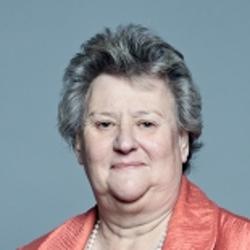Veterans: Homelessness and Temporary Accommodation
(asked on 19th June 2019) - View SourceQuestion to the Ministry of Housing, Communities and Local Government:
To ask the Secretary of State for Housing, Communities and Local Government, whether his Department has plans to start collecting data on the number of former armed service personnel who are (a) homeless, (b) rough sleepers and (b) in temporary accommodation.
Our veterans play a vital role in keeping our country safe and many have dedicated their lives to the services. For those who fall on hard times it is only right that we give them all the support they need to put a roof over their head.
In April 2018, MHCLG introduced a new homelessness data collection called Homelessness Case Level Information Collection (H-CLIC). H-CLIC captures information on all those who engage with local authority homelessness services, including those eligible for temporary accommodation and collects information on the support needs of a household, including support need resulting from being in the armed forces. These show that during October to December 2018, of the 61,410 households owed a homelessness duty in England, 440 required additional support because they formerly served in the armed forces. There are no plans to expand this collection to cover all former armed service personnel to include those who don’t require additional support.
The majority of data collected by MHCLG from local authorities for households in temporary accommodation pre dates the reporting changes in the H-CLIC data collection introduced in April 2018. This means data on armed forces support needs of those in temporary accommodation is not available for MHCLG to collect.
The latest statistics are available here:
The annual single night snapshot of people sleeping rough across all local areas in England provides some basic demographic information (age, gender, nationality).
The latest statistics are available here:
https://www.gov.uk/government/statistics/rough-sleeping-in-england-autumn-2018
The Combined Homelessness and Information Network (CHAIN) is a multi-agency database which records information about people seen rough sleeping by outreach teams in London across the year. Overall, 6 per cent of people seen sleeping rough by outreach workers across London during 2018/19 had served in the armed forces at some point in their lives. 2 per cent of these were UK nationals - around 115 people. The latest statistics are available here:
https://data.london.gov.uk/dataset/chain-reports
Whilst we have a programme of work underway to improve the broader evidence base for homelessness and rough sleeping, we are not planning any major changes to the single night snapshot methodology but continue to encourage users to provide feedback on how these statistics are used and how well they meet their needs
MHCLG is actively encouraging local authorities with significant numbers of rough sleepers to improve their year-round data on rough sleeping and is working collaboratively with local authorities to develop improved homelessness data and outcomes that can measure progress in reducing rough sleeping and homelessness. We are also establishing local data pilots which will seek to improve the data collected by a wide range of services which people who sleep rough access.
This Government is committed to reducing homelessness and rough sleeping. No one should ever have to sleep rough. That is why last summer we published the cross-government Rough Sleeping Strategy which sets out an ambitious £100 million package to help people who sleep rough now, but also puts in place the structures that will end rough sleeping once and for all. The Government has now committed over £1.2 billion to tackle homelessness and rough sleeping over the spending review period. This year, Rough Sleeping Initiative investment totals £46 million and has been allocated to 246 areas – providing funding for an estimated 750 additional staff and over 2,600 bed spaces.
In March, we allocated an additional £1 million of bespoke funding to support former members of the armed forces who are or are at risk of becoming homeless. The funding has been allocated between the Combined Authorities and the Greater London Authority, and will be used to develop new services and support them in engaging with existing service provision.

